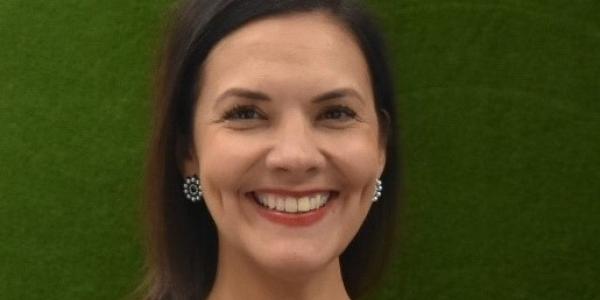From Our President. Reflections on Partnering with Families and NAEYC’s Position Statements: Content and Community

You are here
The theme of this issue, “Welcoming in, Learning About, and Learning from Families,” resonates with me deeply. The articles bring to life the guidelines for establishing reciprocal partnerships with families and honoring families’ cultures, languages, and values that are outlined in NAEYC’s position statement on developmentally appropriate practice (DAP).
As described in my first column, I was born in East Chicago, Indiana, surrounded by a large, loving, Mexican American family. My culture is woven throughout our family’s celebrations and traditions. At the beginning of each school year, my children’s teachers inquire about what traditions we celebrate and how we can bring those traditions and our culture into their classrooms. It is so important for my children to feel represented in their classrooms and for their peers and educators to acknowledge and honor who they are, where they come from, and what our family knows, experiences, and celebrates.
As NAEYC’s president, I am committed to advocating for accessible, affordable, high-quality early care and education for all children that honors and values who they are. High-quality early education includes developing strong and inclusive partnerships with families. The creation of environments where all children feel welcome and a sense of belonging is essential to their learning. Such environments depend on developing strong partnerships with families and ensuring that all children and families are represented in the books and other materials found in early childhood settings.
I thought about my personal contexts and goals as NAEYC’s president as I read this issue. Children’s sense of belonging, agency, and purpose are deeply connected to their learning, which is why the DAP position statement includes a principle stating, “Curricula and teaching methods build on each child’s assets by connecting their experiences in the school or learning environment to their home and community settings.”
Drawn from the research literature, this principle underscores that fostering a sense of belonging requires creating both physical and psychological safety for children. Experiencing connections with their home and community contexts can be a powerful indicator to children that they are safe in the early childhood space. In contrast, when there are few signs of connection, children’s psychological safety is jeopardized. Children need to see themselves reflected in the classroom and program and to have culturally and linguistically affirming and responsive learning experiences. In optimal learning environments, every child and family belongs; there is a place for everyone.
I was also reminded how, in NAEYC’s position statements, content and community are simultaneously practical and aspirational. While much of this issue’s content describes actual educators engaged in excellent and equitable family partnership practices, there are many educators working to do their best in environments where state or district guidelines may be confusing or where funding is uncertain and resources are limited. Some educators may be new to partnering with families and to developing their understandings of families in many contexts. These specific contexts matter.
As NAEYC’s president, I want to hear from educators and lift up resources they find useful and effective. And that means lifting up NAEYC’s position statements and other resources, as well as lifting up the wider range of educators and contexts within the NAEYC community.
A quick search on HELLO, NAEYC’s platform for Interest Forums and online communities (Hello.naeyc.org), shows that NAEYC members are deeply interested in partnering with and supporting families equitably. Educators are asking about and responding to each other on topics such as the differences between family involvement and family engagement; gathering family surveys; supporting families experiencing homelessness; adapting materials to reflect foster families and children, LGBTQIA+ families, families with toddlers, and more. HELLO is a wonderful resource for NAEYC members as they navigate the very specific contexts in which they teach.
Young Children is read widely by NAEYC members, by educators in a range of settings across the US and beyond, and by higher education faculty and students. It brings to life the ideas in NAEYC’s position statements, like in this issue about the many ways to partner with families. If you are seeking more ideas or want to talk through your own particular contexts, as a NAEYC member, you can use the NAEYC community and resources to ask your questions and share your ideas. My hope is that as a whole, NAEYC’s content, advocacy, and community offer you opportunities for self-reflection and action as you think about your own contexts and communities and as you strive to create environments in which each child and family can feel belonging and thrive.
From the DAP Position Statement Guideline 2: Engaging in Reciprocal Partnerships with Families and Fostering Community Connections
- Guideline 2, section A. Educators take responsibility for establishing respectful, reciprocal relationships with and among families.
- Section B. Educators work in collaborative partnerships with families, seeking and maintaining regular, frequent, two-way communication with them and recognizing that the forms of communication may differ for each family.
- Section C. Educators welcome family members in the setting and create multiple opportunities for family participation.
- Section D. Educators acknowledge a family’s choices and goals for their child and respond with sensitivity and respect to those preferences and concerns.
- Section E. Educators and the family share with each other their knowledge of the particular child and understanding of child development and learning as part of day-to-day and other forms of communication (e.g., family get-togethers, meetings, support groups).
- Section F. Educators involve families as a source of information about the child (before program entry and on an ongoing basis).
- Section G. Educators take care to learn about the community in which they work, and they use the community as a resource across all aspects of program delivery.
Seeking Information about Family Partnerships from the NAEYC Community: Snapshots from HELLO
“I am looking for good articles and links to send to our toddler families so that they can learn about empathy and being kind to families who have a child exhibiting hitting and biting behaviors.”
“I was curious to see how some of you approached the classroom family tree for children who are in foster care or may be staying with someone who is not a biological parent for a number of reasons (death, incarceration, etc.). The family tree or family picture was always a staple in classrooms when I taught, and I wanted to see if anyone had any alternatives for children who may have a hard time discussing the topic of family.”
“How do we create welcoming environments for all of our families including LGBTQIA+ families, families of color, families with different abilities, and families with various incomes? I'm hoping to get some ideas about children's books, materials, and resource books.”
Copyright © 2022 by the National Association for the Education of Young Children. See Permissions and Reprints online at NAEYC.org/resources/permissions.
Natalie Vega O'Neil is president of the National Association for the Education of Young Children.
